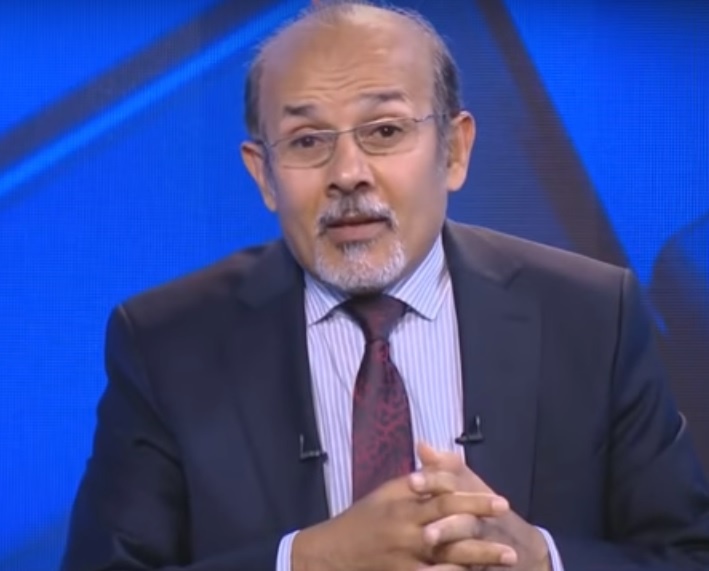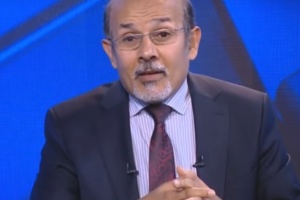By Al-Sanousi Al-Bsikri, a Libyan writer
The new exchange rate, 4.48 LYD to the dollar, its advantages and disadvantages

At the beginning, I express my dissatisfaction with the reluctance of those responsible to appear in the media in times of crisis and in critical circumstances that require communication with public opinion to clarify what happened, and the decision to adjust the exchange rate of the Libyan dinar is a major event that has caused widespread controversy that could have been contained or mitigated if the governor of the Central Bank or a member of the bank’s board of directors appeared to explain the reasons for the decision to adopt the rate of 4.48 LYD to the dollar.
What does the new exchange rate mean?
Countries resort to adjusting the exchange rate of their local currency, by raising and lowering, to meet conditions and developments that require such a policy, and the policy of lowering the exchange rate, which countries resort to in times of recession and in an effort to revitalize the economy by increasing the demand for local product in foreign markets, and reducing dependence on exports, What is available from the local market, however this requires the economy to be productive, industrial and service, which is not available in the Libyan case due to the small size of the non-oil production base and dependence entirely on oil, which is a restricted commodity in terms of production quantities and price level. However, the reasons for reducing the exchange rate of the dinar today are due to the deterioration of its value against the dollar and the negative effects that resulted from that, such as relying on the parallel market to sell currencies, the high prices of all commodities and the severe shortage of liquidity that created a difficult economic situation for the Libyans.
Adjusting the exchange rate, not charging fees:
The Government of National Accord adopted the mechanism of imposing fees on selling the dollar as a solution to the dinar crisis, high prices and lack of liquidity in banks, as the exchange rate of the dinar was not affected and the imposition of fees on selling it amounted to 183%, bringing the value of the dollar from about 1.40 to about 4 dinars per dollar. The policy achieved relatively satisfactory results, especially stopping the noticeable rise of the dollar in the parallel market, which exceeded 9 dinars and eliminating the phenomenon of long queues as for banks seeking cash. However, the imposition of fees opened the debate about the proceeds from the sale of the dollar, which exceeded the oil revenues estimated in the Libyan dinar, among the reasons for the outbreak of the dispute between the financial and monetary policy makers was, ‘what if the proceeds of selling the dollar were controlled, this mechanism would be the most appropriate under the political and economic conditions in the country’. As a temporary solution until political and economic stability is achieved.
Advantages and disadvantages of adjusting the rate:
The new exchange rate will deal with obvious imbalances, including eliminating the double exchange rate of the dollar between an official rate in banks and a parallel rate on the black market, which opened the way for corruption to grow by obtaining dollars at a reduced rate from banks and selling it on the parallel market by a large difference. The double price also caused problems related to smuggling and confused the economy's movement due to its dependence on the fluctuations of the dollar's price in light of the recurrent crises. The most important issue is to provide a large cash flow to the public treasury that covers expenditures and increases, so at the current level of production and price of oil, and after deducting its production expenditures and other basic expenditures in dollars, it is likely to achieve an annual income of 16.5 billion dollars, while what the general budget needs, which based on the new exchange rate is in the range of 10.5 billion dollars. Which means covering public expenditures and achieving a surplus in hard currency that can be directed to projects developments. On the other hand, the price officially stabilizes inflation at a level close to its current level, which means that the incomes of most Libyans will become very low, given the new exchange rate of the dinar, and because of the total dependence on consumption on the outside.
Conclusions and caveats:
The desired goals could have been achieved at an exchange rate lower than the approved price, especially maximizing revenues in the Libyan dinar while reducing the burden on the large number of Libyans, who have low-income, as the price of 3.75 would have covered public expenditures and constituted an acceptable decline in the general price level, and therefore the government is required to address the problem of inflation The lower incomes in a way that improves the standard of living of the Libyans and does not have negative economic impacts.
On the other hand, the exceptional and difficult economic situation may give the new rate advantages and may achieve positive results, as mentioned above, but this will depend on the availability of the dollar to its applicants and preventing any fraud that may occur in banks leads to the continuation of the duality in the price of the dollar even after adjusting and unifying it against the dinar.
Finally ... it should be noted that the current crisis has its own specificity by referring to its causes, the most prominent of which is the manipulation of the source of income, which is oil, and deficient financial and monetary policies, but it belongs to the origin of the economic crisis that goes back to the eighties of the last century, which is the period of the adoption of socialism and the resulting of imbalances that still accompanying and destroying the national economy.
Therefore, after political stability, addressing the Libyan economy should go towards fixing the structural defect by expanding the production base and ending the state of total dependence on oil.
Disclaimer: The views and opinions expressed in this article are those of the writer, and do not necessarily reflect those of The Libya Observer


